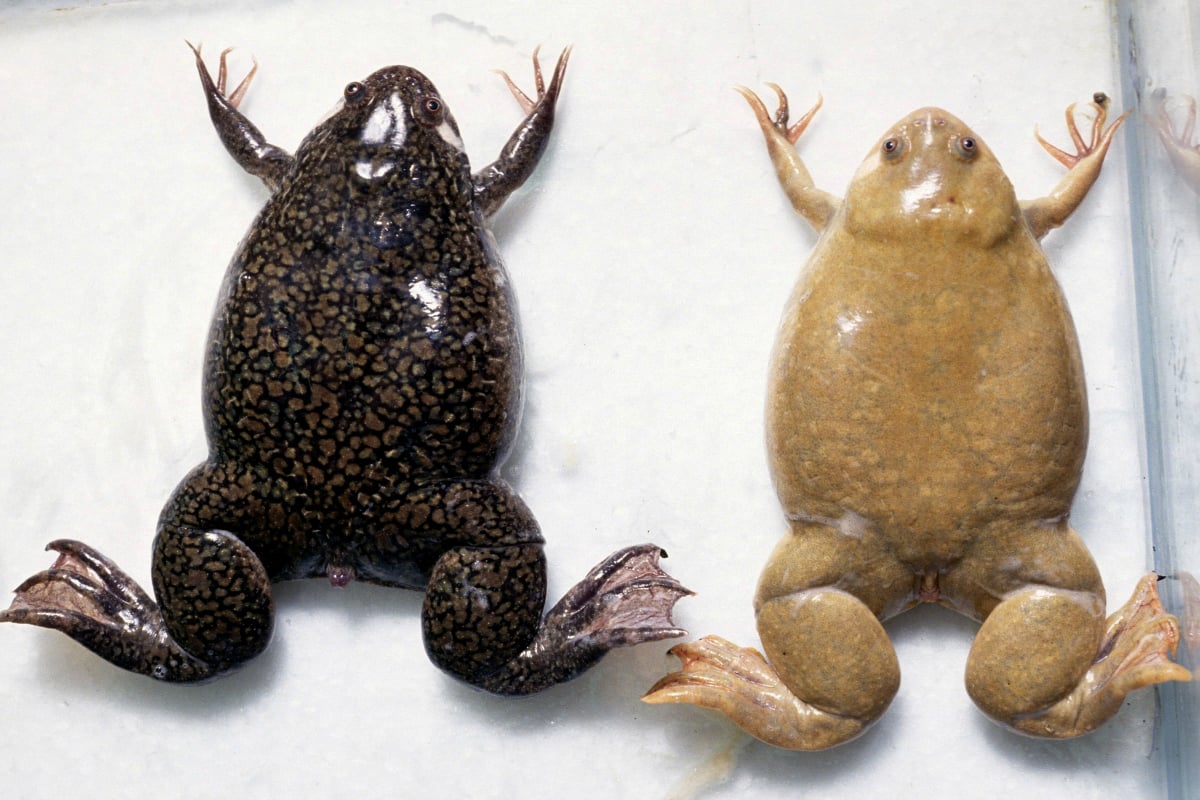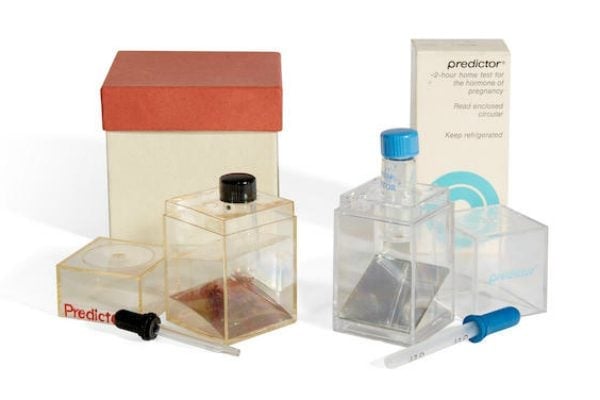
While peeing on a plastic stick might not seem like the most sophisticated means of determining whether or not you’re carrying human life, it’s worthwhile remembering that just a handful of decades ago doctors relied on a frog.
Yes, as recently as the 1960s, there were labs scattered around the world dedicated to a single species, known as the African clawed frog. Specimens were shipped from country to country, and bred in their tens of thousands. All because this unassuming little amphibian served an unlikely function as the medical-standard human pregnancy test.
The bizarre discovery was made in the ’30s by a British zoologist named Lancelot Hogben (it’s true, promise). While studying hormones, Hogben conducted an experiment that involved injecting extracts from an ox’s pituitary gland into an African clawed frog. The surprise result? The frog laid eggs.
By then, scientists were aware that a pregnant woman’s urine contained hormones made in the pituitary gland, and a curious Hogben and his colleagues simply put two and two together.
What became known as the Hogben test was a simple as it was odd. As The Smithsonian Museum explains: “Doctors would ship urine samples to frog labs, where technicians would inject female frogs with a bit of the urine into their hind leg. The animals would be placed back into their tanks, and in the morning the technicians would check for tell-tale frog eggs dotting the water. If the female frog had ovulated, that meant the woman who provided the urine was pregnant and the pregnancy hormone, human chorionic gonadotropin, had kicked off ovulation in the frog”.
